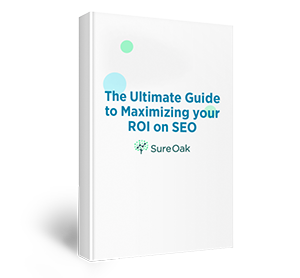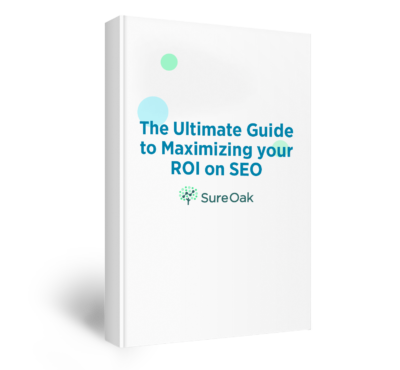
SEO is the backbone of your digital marketing efforts. Few things have the power to drive more visitors to your site than organic website traffic. However, SEO best practices are continually changing as the tech giants seek new ways to ensure they deliver the highest quality, most relevant results for every search term.
Here, we’ll walk you through how to increase organic traffic. So you can boost your website’s visibility, ranking, and engagement.
What is Organic Traffic?
Organic website traffic refers to the visitors coming to a website through unpaid search results. When someone uses a search engine like Google or Bing to find information and clicks on a link from the search results that leads them to a website, that is considered organic traffic, here are some key characteristics of organic traffic:
- It’s not influenced by paid advertising. Visitors naturally arrive at your website by finding it through a search engine.
- Websites that are well-optimized for search engines are more likely to rank higher in the SERPs for relevant keywords and receive more organic traffic.
- High-quality content that’s relevant and valuable to users is more likely to attract organic traffic.
- Building organic traffic is usually a long-term strategy, as it takes time for a website to build authority and rank higher in search results.
- Organic traffic often brings visitors actively looking for information or solutions that the website provides, making this traffic highly valuable for businesses and content creators.
SEO Traffic vs. Paid Traffic
Unlike organic or SEO traffic, paid traffic comes from users clicking on ads. As the name states, paid traffic requires a financial investment. However, while organic traffic is “free” because you aren’t paying for each click, it also requires an investment in time and labor. Paid traffic can drive visitors to your website more quickly, but organic traffic is generally a more sustainable and credible traffic source in the long run.
The Role of SEO in Generating Organic Website Traffic
By optimizing your website’s content and structure, effective SEO techniques make it more engaging to readers and understandable to search engines. SEO also helps you focus on creating valuable content that answers users’ questions and satisfies their intent. The following SEO best practices will help you learn how to drive organic traffic to your website.
5 SEO Techniques & Strategies that Drive Organic Traffic
SEO can seem overwhelming when you’re starting. Don’t worry about implementing every technique at once. Start with one, and when you’ve mastered that, move on. We’ll discuss the top five strategies for how to increase SEO traffic.
1. Striking Distance Keywords
“Striking distance” keywords are keywords for which your website already ranks pretty high but not quite at the top of search results. Targeting these keywords can be one of the most effective organic SEO techniques because it often requires less effort to improve the rankings of pages already performing reasonably well compared to starting from scratch.
Here’s how to make the most of striking distance keywords:
- Use tools like Google Search Console, SEMRush, or Ahrefs to find which keywords your website ranks for on search results’ second or third page.
- Analyze the page’s content for each striking distance keyword to determine how it could be improved. Compare it to content that ranks on the first page of search engine results.
- Improve the content by adding new information, incorporating the keyword naturally, and improving readability.
2. Content Gaps
Content gaps refer to topics or keywords being covered by your competitors but need to be addressed or adequately addressed on your own website. Identifying and filling content gaps is an important content strategy for expanding your online presence, capturing more organic traffic, and providing more value to your audience. Here’s how to effectively address content gaps:
- Analyze the content of your main competitors. Identify topics and keywords they cover, especially those bringing traffic or engagement.
- Conduct keyword research to find relevant keywords that your competitors are ranking for, but you are not.
- Find questions and topics that your audience is interested in, but you haven’t covered on your website.
- Once you’ve identified the content gaps, create high-quality content to fill them. Focus on providing value to the user, answering their questions, and offering solutions to their problems.
3. Content Optimization and Refresh
Update existing content on your website to remain relevant, valuable, and optimized for search engine rankings. Information and trends change over time, and search engines often favor fresh and up-to-date content crafted by professional content writing services. Here are some strategies to make your current content more effective:
- Identify content that used to perform well but has seen a decline in traffic, is outdated, or could be expanded with additional information.
- Replace outdated information, statistics, or references with the most recent data.
- Expand on points that were only briefly covered, and add new sections that provide additional insights or address related topics.
- Re-evaluate the keywords the content is targeting to look for new, more popular ones.
- Make your content scannable by breaking up large blocks of text, using headings and subheadings, and including bullet lists.
4. Long-Tail Keyword Optimization
Long-tail keyword optimization involves targeting longer, more specific keyword phrases in your content. These usually consist of three or more words and are more precise than shorter, general keywords. Here’s how to effectively optimize for long-tail keywords:
- Research long-tail keywords relevant to your niche. Look for keywords with decent search volume and lower competition.
- Understand the intent behind a long-tail keyword. So, you can create content that precisely meets the user’s needs.
- Create content that thoroughly covers the topic and provides valuable insights.

5. Take care of fundamental SEO elements
Don’t overlook the technical details that can help you generate organic traffic.
On-Page SEO
Optimize individual pages for specific keywords, ensuring the content is high-quality, relevant, and structured. Use descriptive file names, including targeted keywords and alt text for images. Use descriptive and concise URLs that include keywords and accurately represent the content.
Meta-Data
Write effective meta titles and descriptions for your pages to improve click-through rates from search results. Use relevant keywords near the beginning of your titles and meta description. Use schema markup to provide search engines with more information about the content and structure of your pages.
Internal Linking
Use internal links wisely to help distribute page authority throughout your site and improve navigation. Your anchor text for links should be descriptive. So users and search engines understand what they’re about.
Technical Audit
Regularly conduct technical SEO audits to identify and fix issues like broken links, duplicate content, or slow loading times that might hinder your site’s performance. Some of the top issues to look for during a technical audit include:
- Site speed
- Mobile responsiveness
- Crawl errors
- Duplicate content
- XML Sitemap
- Security compliance
Bonus Technique #6: Tracking and Measurement
After you’ve worked hard to optimize your SEO, you’ll want to closely monitor your website’s performance to ensure it’s effective. Here’s how you can incorporate tracking and measurement into your SEO strategy:
- Use analytics tools like Google Analytics and Google Search Console to track your website’s performance.
- Set clear goals and Key Performance Indicators (KPIs) that align with your business objectives, such as increasing organic traffic, improving keyword rankings, or boosting conversions.
- Regularly monitor your website’s ranking for targeted keywords to understand which efforts are paying off.
- Analyze and understand how users interact with your site through metrics such as bounce rate, time on site, and pages per session.
- Set up conversion tracking to measure how many visitors are taking desired actions on your site, such as signing up for a newsletter, purchasing, or filling out a contact form.
- Analyze the performance of individual pieces of content to see which are driving traffic and engagement and which might need optimization or update.
- Monitor your competitors’ content, backlinks, and keyword rankings to identify opportunities and threats.
Bonus Technique #7: Backlinks!
Backlinks are links from one website to a page on another website. They’re crucial in SEO as they can significantly impact your rankings and authority. Here are some strategies to effectively use backlinks:
- Focus on earning high-quality backlinks from reputable and relevant websites. A few links from authoritative sites can be more valuable than numerous links from low-quality sites.
- Creating high-quality, valuable content that others naturally want to link to.
- Guest posts for authoritative websites in your niche in exchange for a link back to your site.
- Engage with other website owners, bloggers, and influencers in your industry. Building relationships can lead to natural link-building opportunities over time.
- Share your content on social media to increase its visibility. While social media links themselves are often nofollow, which means not passing SEO value, the exposure can result in others linking to your content.
- Get your content included in resource pages. These are pages that link to high-quality content on a specific topic. If you have content that adds value, reach out to the owners of resource pages and ask for inclusion.
- Find broken links on other websites that are relevant to your content. Reach out to the website owner and suggest replacing the broken link with a link to your relevant content.
- Regularly monitor your backlink profile to ensure you’re gaining high-quality links and not being affected by spammy links. If you find bad links pointing to your site, consider using the Google Disavow Tool.
Persistent SEO Tactics for Steady Organic Traffic
SEO isn’t a one-and-done proposition. You’ll need to stay on top of the industry’s constantly changing trends and developments if you want to achieve and maintain top search engine rankings. At SureOak, we provide proven SEO and link-building strategies that help you grow your traffic, leads, and revenue. Reach out today for a free strategy session.





